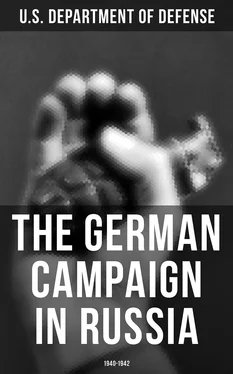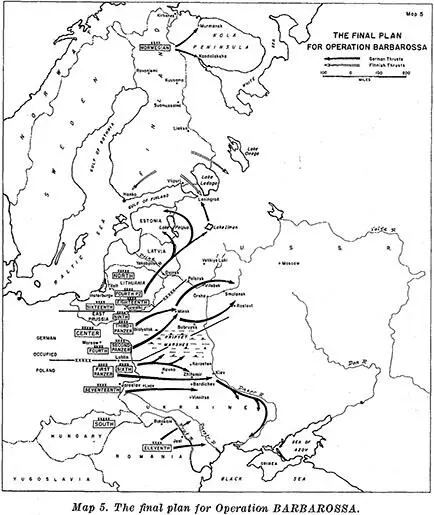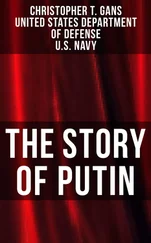U.S. Department of Defense - The German Campaign in Russia - 1940-1942
Здесь есть возможность читать онлайн «U.S. Department of Defense - The German Campaign in Russia - 1940-1942» — ознакомительный отрывок электронной книги совершенно бесплатно, а после прочтения отрывка купить полную версию. В некоторых случаях можно слушать аудио, скачать через торрент в формате fb2 и присутствует краткое содержание. Жанр: unrecognised, на английском языке. Описание произведения, (предисловие) а так же отзывы посетителей доступны на портале библиотеки ЛибКат.
- Название:The German Campaign in Russia: 1940-1942
- Автор:
- Жанр:
- Год:неизвестен
- ISBN:нет данных
- Рейтинг книги:3 / 5. Голосов: 1
-
Избранное:Добавить в избранное
- Отзывы:
-
Ваша оценка:
The German Campaign in Russia: 1940-1942: краткое содержание, описание и аннотация
Предлагаем к чтению аннотацию, описание, краткое содержание или предисловие (зависит от того, что написал сам автор книги «The German Campaign in Russia: 1940-1942»). Если вы не нашли необходимую информацию о книге — напишите в комментариях, мы постараемся отыскать её.
The aim of this edition is to present in a comprehensive way the strategy and military operations of the German army in the attack on Russia in World War 2. The narrative starts with Hitler's initial plans for an invasion of Russia and ends at the time of Germany's maximum territorial gains during the battle for Stalingrad.
Contents:
Strategic Planning
Operational Planning
The Initial Operations (22 June-31 July 1941)
Planning for Future Operations
The Diversion and Reassembly
The German Attack on Moscow
The Russian Counteroffensive (December 1941-February 1942)
Preliminary Planning for a German Offensive in the Caucasus, 1942
Preparations for the German Summer Offensive
Initial Operations and New Plans (July 1942)
The Period of Stagnation (August-October 1942)
Critical Analysis of the German Summer Offensive in 1942
List of German Military Leaders (July 1940-November 1942)
Chronology of the Events













